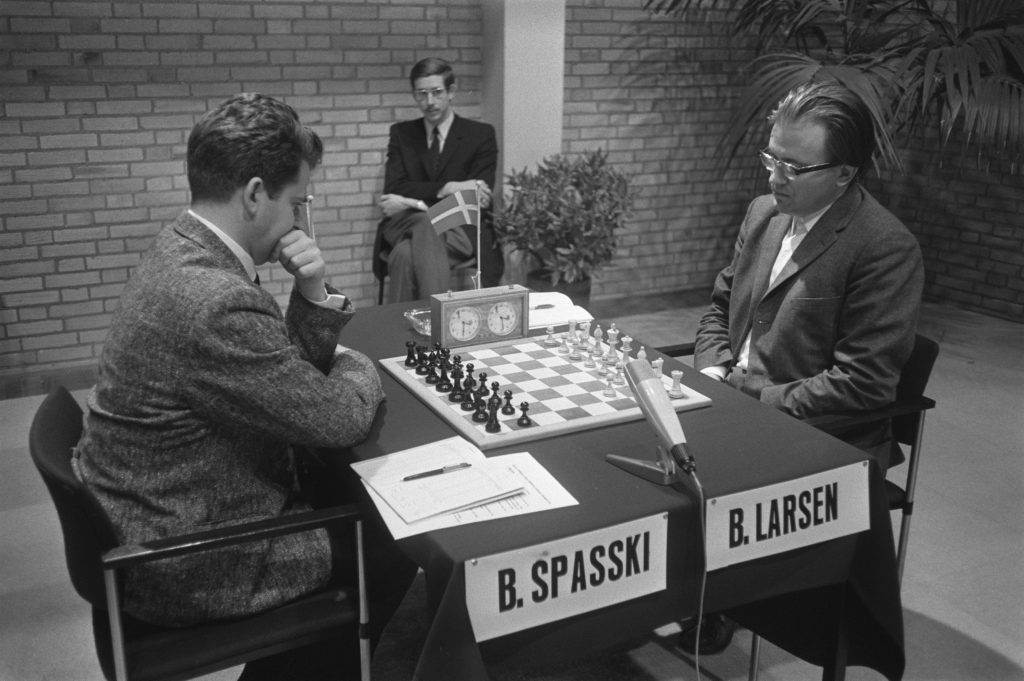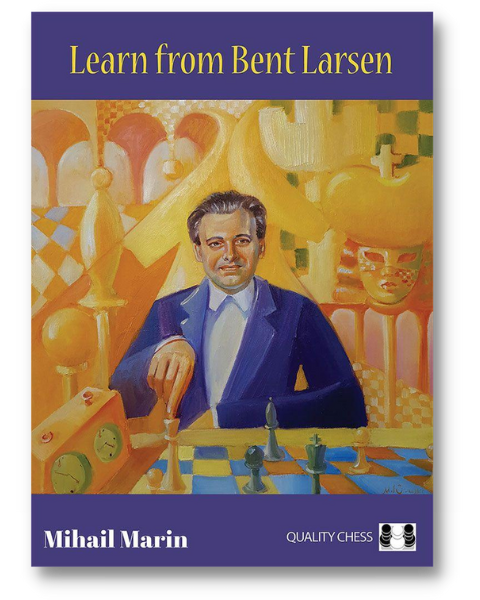Book review of Learn from Bent Larsen
“Of the many chess masters I have met, Bent is the most original.”
– Former World Champion, Anatoly Karpov.
The great Danish champion Bent Larsen always had a reputation for being a fighter who played for a win against any player. This brought him many spectacular victories but also some famous defeats, such as his miniature loss against Spassky in The Match of the Century in 1970, and his sensational 6-0 loss against Fischer in their semi-final of the Candidates Tournament in 1971. Despite this latter loss, he bounced back and continued to be a world-class player for many years, with some further strong tournament victories to his name.

Karpov’s quote above is an apt description of Larsen. He had an original approach to chess and managed to ignore fashion and go his own way. This was often so in the opening phase where he introduced some notable systems, such as eschewing the Open Sicilian (1.e4 c5 2.Nf3 d6 3.d4) as White, where he described as 3.d4 as a “cheap trick” and advocated 2.f4 instead, and playing 1.b3 as White, an opening now often called Larsen’s Opening.
In Learn from Bent Larsen, author Mihail Marin summarizes Larsen’s style as follows.
“Larsen was a brilliant attacker and tactician, embarking on concrete play at the first given opportunity … Larsen himself wrote that he was not an exclusively tactical player, one openly aiming for complications even at the risk of landing into a worse position … Polugaevsky writes – contrary to the opinion of most commentators – that Larsen’s main strength is his strategic play … Botvinnik adds a third dimension to the portrait: “Larsen can create things which did not exist in chess before.” Indeed, many of Larsen’s plans, tactics and attacks were unexpected and original.”
Larsen’s book of his games, Larsen’s Selected Games of Chess, was published in English way back in 1970 and was based on the 1969 Danish edition. Although he continued to annotate his games in various places, notably Chess Informant, it’s regrettable that he never updated his book or published a sequel. However, an expanded version of his book was published in 2014 by New In Chess as Bent Larsen’s Best Games, and this book contains the games in Larsen’s book and a selection of his later games.
Learn from Bent Larsen, by GM Mihail Marin, uses Larsen’s games as a vehicle for chess improvement. While the book obviously includes many of Larsen’s best games, Marin’s main aim is to show readers how they can learn from Larsen’s games and apply his ideas in their own games. For example, Larsen was an early pioneer of pushing the a- and h-pawns, and the move h4 by White is now a common theme in openings such as the King’s Indian, Grünfeld, and Modern/Pirc Defences.
The main part of the book is structured around various themes in Larsen’s games, including his optimistic approach to chess, his use of hypermodern ideas, his use of the rook pawns, and his endgame play. There is a biographical chapter that covers his career with further illustrative games. Finally, there is a test chapter with 12 positions for readers to solve, with extensive solutions. Two appendices summarise Larsen’s life and best results. Many historical photos are included throughout the book.
It is perhaps not surprising that there is considerable overlap in the games in this book with Larsen’s own book and his later annotations. However, Marin has made a considerable effort to update Larsen’s analysis and that of other commentators, notably Garry Kasparov, with the results from modern super-strong engines. Of course, the engines have provided new insights and enabled Marin to correct many errors in previous analyses. These corrections enhance the games, rather than detract from analysis that was mostly done without strong chess engines. Larsen would have been the first to admit that errors in analysis are inevitable. He famously wrote: “Long analysis, wrong analysis.” As expected from Marin’s previous books, there is a good balance of prose and variations in the analysis, and this allows readers to absorb the material more easily.
Two examples from the book are given below, with annotations from the book.
Learn from Bent Larsen: Example 1
Learn from Bent Larsen: Example 2
In conclusion, this is an excellent book that combines a study of Larsen’s creative work with analysis that provides a lot of material for chess improvement. It is an enjoyable read and it is suitable for a wide range of players.
Have any thoughts or questions? Let us know in the comments below!
- New Release: Chess Analysis – Reloaded - March 9, 2024
- Review: The Art of The Endgame – Revised Edition - February 14, 2024
- Review: Study Chess with Matthew Sadler - December 13, 2023

